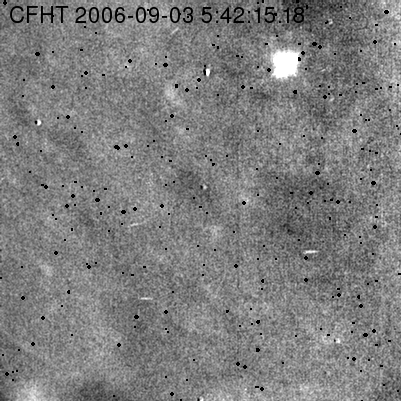Spacecraft down at 0542 GMT, the BBC says:
Astronomers are now analysing a plume of fresh lunar “soil”, or regolith, kicked up by the crash. They have also been looking for the bright flash as the probe hit the surface. The impact was expected to leave a 3m by 10m crater on the Moon’s surface, spreading debris over 78 sq km (30 sq miles).
The Planetary Society reports:
SMART-1 scientist Detlef Koschy confirmed that mission control lost the SMART-1 signal at 10:42:19. He reported that folks at ESOC applauded when the “mission ended just as planned.” Team members at ESOC are now downloading final pictures. SMART-1 took images up to about 5 minutes before impact.
Astrobiology Magazine reports:
The European Space Agency’s Smart-1 mission ended on September 3rd 2006, at 07:42 CEST (05:42 UT). Its final lunar resting place is located at 46.2º West longitude and 34.2º South latitude.
Update: the Canada France Hawaii Telescope on Mauna Kea has the following image of the impact!



